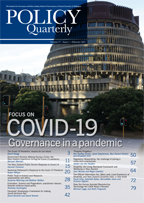Disability
the Living Standards Framework and Wellbeing in New Zealand
DOI:
https://doi.org/10.26686/pq.v17i1.6732Keywords:
disability, wellbeing, living standards, inequalityAbstract
Disabled people and their whänau have poorer outcomes across a wide range of wellbeing and living standards measures.1 Yet disability analysis does not appear to be well integrated into government decision making on wellbeing. This article builds a framework for understanding disability in a wellbeing context by using the Treasury’s Living Standards Framework and Sophie Mitra’s human development model for disability and health. One of the most important aspects of Mitra’s model is the interaction between resources and structural factors. Structural factors, such as an inaccessible built environment, force disabled people to spend more resources to get the same outcomes as nondisabled people. Publicly funded disability support is essential to counteract these structural factors. We also need to improve the usability of the four capitals for disabled people and their whänau to reduce these structural barriers.
Downloads
Downloads
Published
Issue
Section
License
Permission: In the interest of promoting debate and wider dissemination, the IGPS encourages use of all or part of the articles appearing in PQ, where there is no element of commercial gain. Appropriate acknowledgement of both author and source should be made in all cases. Please direct requests for permission to reprint articles from this publication to Policy-Quarterly@vuw.ac.nz.



